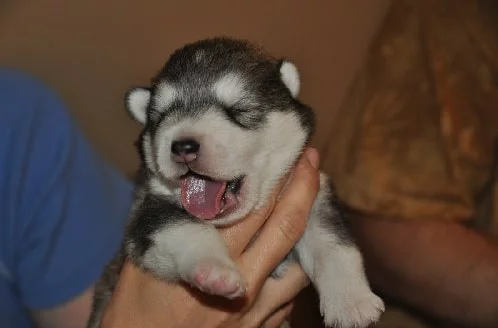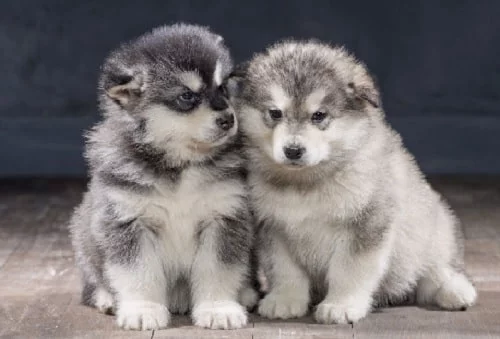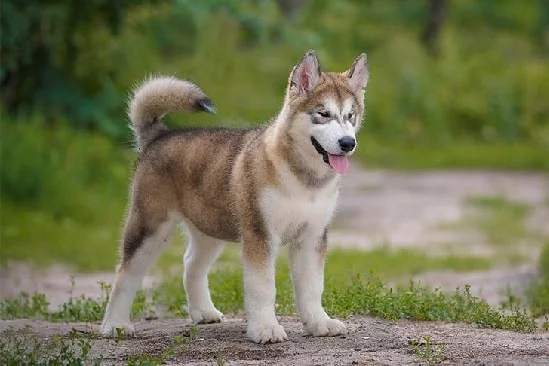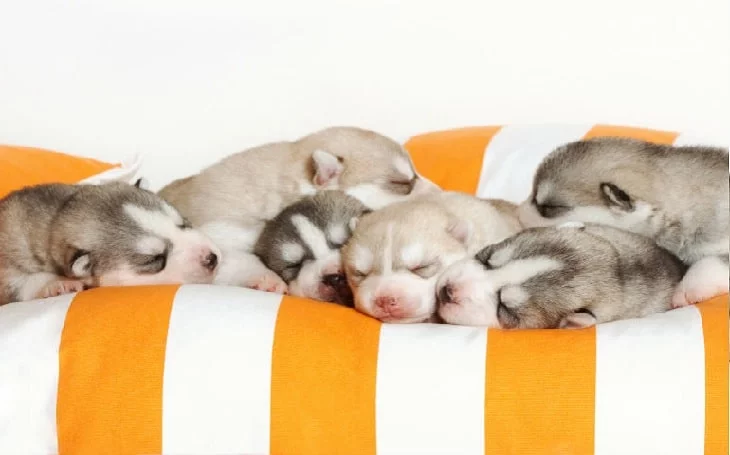Alaskan Malamute Puppies
Alaskan Malamute is a fluffy dog breed that with a medium-sized, dense coat covering its body. At first glance, it looks large, wolf-like dog but is really sweet in nature. While the adults look bold and powerful, the puppies are really cute and look like a walking toy.
It is a large-sized dog so the development process is quite slow than other small-sized dog breeds. Here in this article, you will learn about the developmental stages of Alaskan Malamute and their behavior in each stage.
Newborn Malamute Puppies
All the newborn puppies are deaf, blind for a few weeks of birth. They are not able to see or hear anything around them. However, they can feel their mother and her touch which is how they get to her. In the first 2 weeks, they are not able to stand on their own feet and while getting to their mother, they crawl.
They cannot generate their own body temperature so they fully rely on their mother for the warmth. In the second week, they get double the birth size. They need at least 90% of sleep regularly for healthy development. At this stage, they cannot bark but make a low whine or squeal while calling their mother.
Neonatal Stage (0-2 Weeks)
It is a period between the first two weeks when they are still not able to see, hear, walk or smell. They are dependent on their mother even for defecating as they cannot defecate on their own. The mother licks their tummy to stimulate them for peeing and defecating. She even cleans her puppies waste which is normal and natural. The puppies mostly spend their time eating and sleeping at this time.’

Image Source: Godly Dogs
Transitional Stage (2-4 Weeks)
This is one of the very important stages for your Alaskan Malamute puppy. Its eyes start to open, they begin to hear their little mates and get familiar with the new world. Their teeth are not fully developed, so they still cannot eat solid food and depend on their mother’s milk but tries food from their mother bowl.
The puppies begin to wag their tail after 3 weeks and start to give a small bark, whine, and give wobbly steps. They start playing and get to know their surroundings. This is also a critical stage as they start to see anyone around them as their family. Therefore they need to spend more time with family members and with their littermates than outsiders.

Image Source: moonsnoemalamute.weebly.com
Socialization Stage (4-16 Weeks)
The period between 4-6 weeks is a very important stage or the Alaskan Malamute Puppies. This is the time when they need to be exposed to the outside world slowly. Keep them on a leash and take them out in a park where they can interact with other dogs and human beings.
It is also the stage of training them some basic stuff like obedience training, potty training, and walking on a leash. They are very eager to please at this age and tend to respond well to positive reinforcement. They are also grown bigger and are around 11-13 kgs by 3 months.

Image Source: Pets4Homes
Juvenile Stage (4-6 Months)
This the stage where the puppy hits puberty and their puppy face and body start to look more mature. They are very energetic and curious temperament at this time, so patience is very necessary with them. This is the time when you should establish yourself as a pack leader otherwise they will become your master.
Adolescence Stage (6-18 Months)
This is the stage when the grows fully and turn into an adult Alaskan Malamute. They are matured both physically and sexually which is the right time for mating. This is the time when they need complete balanced diet and required supplements. Although they are grown fully, their puppy behavior will still be there and takes another year for them to be completely matured.

Image Source: AKC Marketplace
The Alaskan Malamute starts to enjoy a small adventure like the following the scent in the yard. They love hiking and running with their master, so they make a great companion for someone that is into hiking, running and other sports.
Visit Doglime for more puppy developmental stages.
Tags










